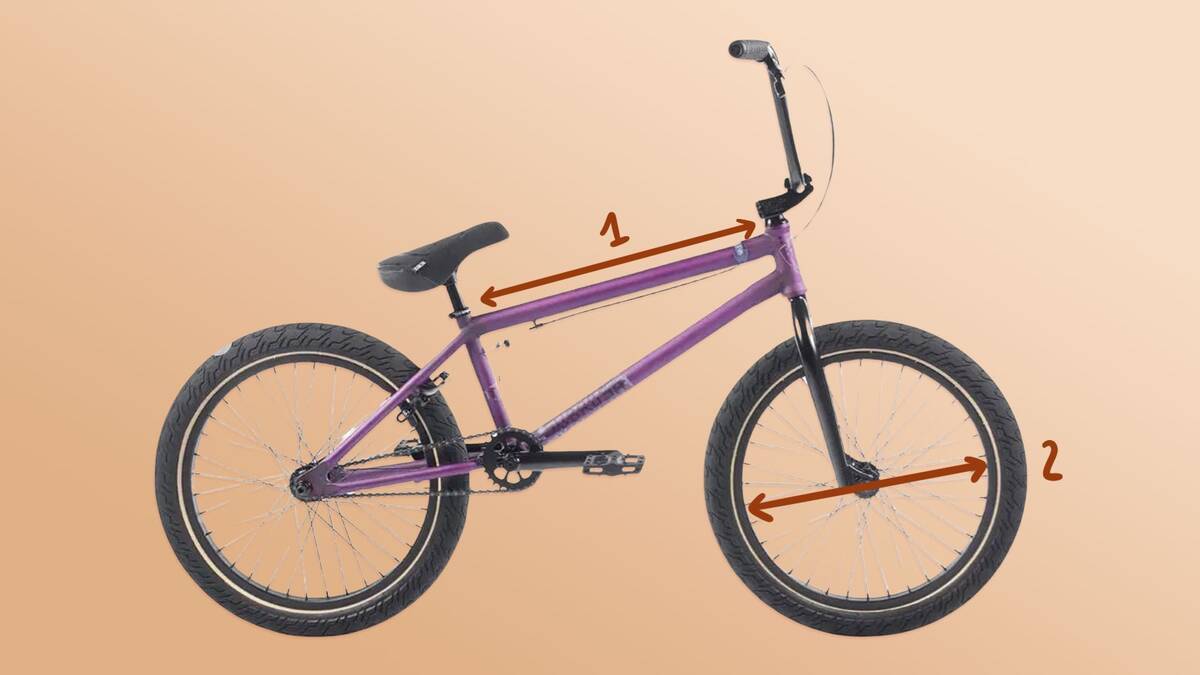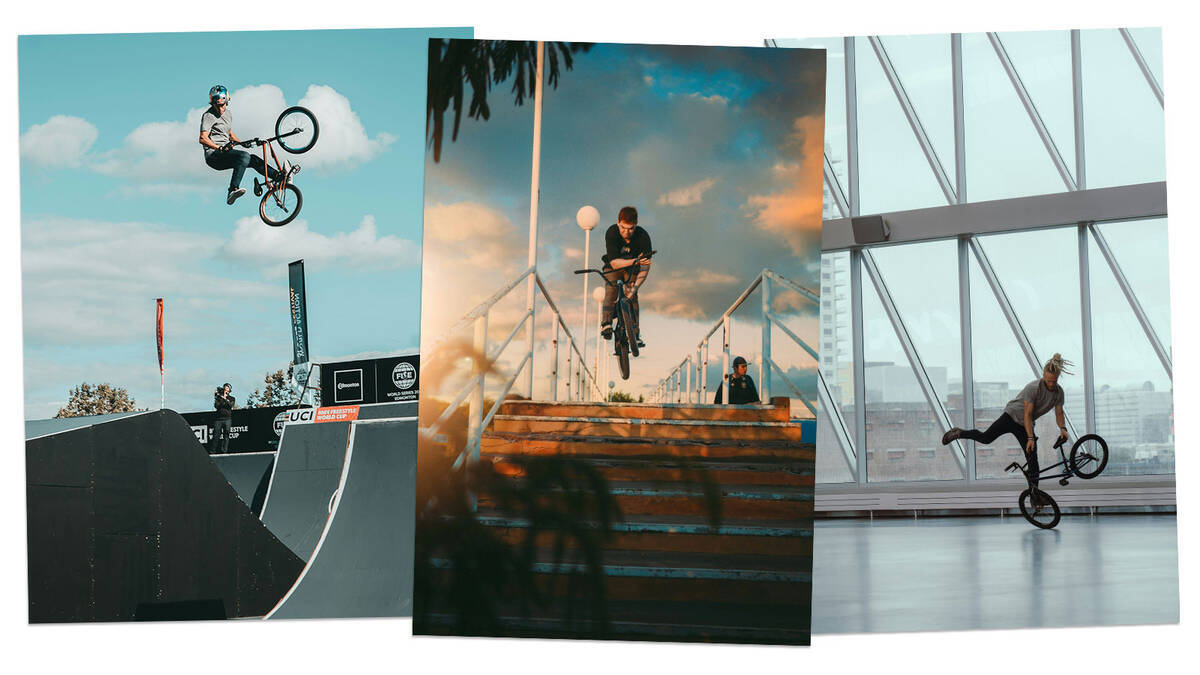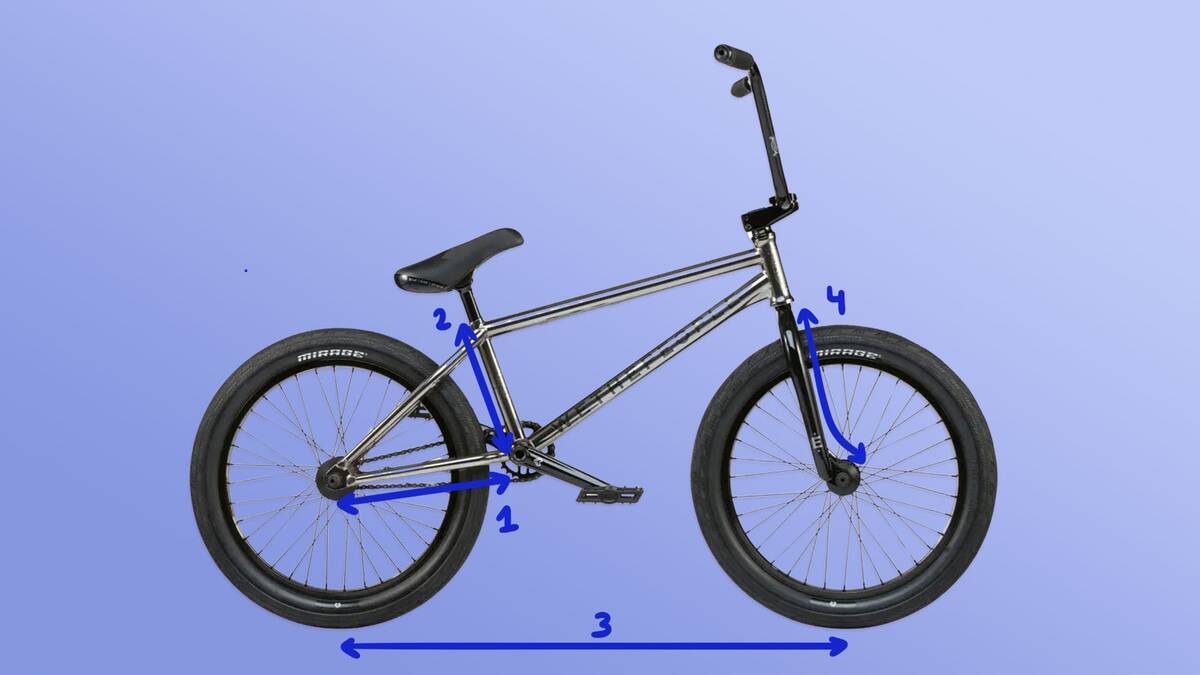Guide to Buying Complete BMX Bikes
Choosing a complete BMX bike requires careful consideration of several factors to ensure it meets the rider's needs and preferences. Here's our comprehensive guide to buying complete freestyle BMX bikes.
Finding a complete BMX bike that suits your needs doesn’t have to be difficult. You should be able to make a good choice if you read the individual product specifications and follow the size charts provided for each bike in our selection. In the following, you will get a bit more in-depth information to guide your choice.
Overview
Are Complete BMX Bikes Worth It?

If you’re a beginner, we recommend getting a complete bike rather than building one from scratch. You will get more out of your investment with a decent complete bike, and you can always upgrade parts of the bike later on.
If you’re an experienced rider with specific preferences, we recommend taking a look at some of the high-end complete BMX bikes in our assortment. You'll get a lot of value for your money if you can find a complete bike with specs that meet your requirements.
To sum up: Complete BMX bikes are definitely worth it if you take your time to find one that suits your needs.
We have a variety of high-quality complete freestyle BMX bikes. They range from inexpensive beginner-friendly setups to pro-level bikes made up of high-quality aftermarket parts. Check out our selection:
BMX Bike Size – What BMX Bike Size Should I Get?

1. Top tube length 2. Wheel diameter
Getting the right size BMX is a matter of finding the perfect fit for your height, riding style, and preferences.
The standard wheel diameter for all freestyle BMX disciplines is 20 inches, even for adult-sized bikes. However, you can also get freestyle bikes with 22 and 24-inch wheels.
The small wheels make freestyle BMX bikes agile and trick-friendly. Kids or smaller individuals interested in trick-oriented freestyle riding need an even smaller wheel size. Kids’ BMX bikes sizes range from 12 to 18 inches depending on their age and height.
If you're very tall or looking for a bike to cruise while occasionally throwing tricks, a 22 or 24-inch freestyle BMX might be a good option. However, these bikes won't be as agile or enjoyable for technical tricks in parks or streets due to their larger wheels.
Another important aspect of BMX sizing is the top tube length, which usually falls within the range of 19.5 to 21 inches for freestyle BMX bikes. Taller riders may find a longer top tube more comfortable.
Follow the BMX size chart below for general recommendations on choosing the right size BMX:
| Rider Age | Rider Height (cm & inches) | Wheel Size (inches) | Top Tube Length (inches) |
| 3-5 years |
95 - 112 cm / 37 - 44" |
12” | 12” |
| 5-7 years |
112 - 126 cm / 44 - 49" |
14” |
13” |
| 7-9 years |
126 - 138 cm / 49 - 54" |
16” | 15” |
| 9-11 years |
138 - 149 cm / 54 - 58" |
18” | 17” |
| 10-12 years |
145 - 160 cm / 57 - 63" |
20” | 19.5 - 20.25" |
| 11-13 years |
150 - 168 cm / 59 - 66" |
20” | 20 - 20.5" |
| 13-15 years |
160 - 175 cm / 63 - 69" |
20” | 20.25 - 20.75" |
| 15-17 years |
175 - 183 cm / 69 - 73" |
20” | 20.75 - 21" |
| over 183 cm / 73" tall |
183 cm + / 73” + |
20” | 21" + |
Note: The chart is for general reference. Riding style matters a lot when it comes to BMX sizes. For example, an adult strictly into flatland BMX may prefer a top tube up to two inches shorter than what's recommended above.
Freestyle BMX Riding Styles – What Type of Freestyle Bike Should I Choose?

Freestyle BMX can be divided into disciplines like park, street, and flatland BMX. In this chapter, we'll look at some of the specifications that are relevant, when finding a bike that matches a specific riding style. It’s always a good idea to factor in your preferred riding style when choosing a complete BMX.
If you are a beginner, we advise you to get a versatile BMX that helps you develop basic skills and discover your preferences as you go along.
BMX Street Bikes
Street BMX riding is a technical discipline that involves grinding rails and ledges, jumping stairs, and performing tricks in street spots. Like many street sports, street BMX is all about engaging with the city’s architecture in fun and creative ways.
- Shorter Chainstay/Wheelbase: Street BMX bikes often have shorter chainstays for better maneuverability and responsiveness.
- Taller Seat Tube: Street riders often prefer slightly higher seat tubes, making it easier to tuck the saddle between the legs when doing tricks.
If you are fascinated by technical street BMX, you need a snappy, responsive, and maneuverable setup.
BMX Park Bikes
Park BMX is practiced in skateparks where freestyle tricks are performed on obstacles specifically designed for the purpose. In skateparks, you can practice air tricks and ride sections that simulate street obstacles. Park BMX is very versatile, and you have the option to combine different styles of riding.
- Longer Chainstay/Wheelbase: For stability on bigger ramps and higher speeds, park riders often prefer a longer rear end/chainstay, resulting in a longer wheelbase.
- Lower Frame: Shorter seat tubes enable the rider to get their legs over the frame during tail whips and air tricks.
If park riding and doing bigger air tricks and transitions is your thing, you will prefer a more stable setup with a longer wheelbase and a shorter standover height.
Flatland BMX Bikes
Flatland BMX requires only a flat surface, like a parking lot or town square. A good flatland BMX bike has a geometry that invites the rider to perform spins and tricks at low speeds. It should be lightweight, easy to balance, and highly responsive.
- Smaller and Lower Frames: Smaller frames for agility and easy handling. Shorter top tubes and chainstays result in a quick and responsive setup. Additionally, a shorter seat tube is less likely to get in the way of your tricks.
- Pegs on All Wheels: Flatland setups usually have pegs on all four wheels for endless trick options.
- Zero-Offset Fork: Helps transfer pressure directly from handlebars to the front wheel, aiding balance.
- Gyro Brakes: Gyro brakes prevent cables from tangling during tricks.

1. Chainstay 2. Seat Tube 3. Wheelbase 4. Wheel Offset
If you're dedicated to flatland, look for these features. If you're a street rider wanting to do flatland tricks, consider elements like slightly smaller offset forks or adding extra pegs.
What Specs to Look for When Buying a Complete BMX?

When choosing a complete BMX bike, it is a good idea to go for a model that you can easily upgrade with high-quality after-market parts. Consider the following specifications:
- Bottom Bracket and Cranks: Bikes with American bottom brackets and one-piece cranks, are less durable and belong to the low end of the quality-spectrum. If you choose a bike with MID bottom brackets, it is easier to find a solid upgrade to your crankset.
- Integrated vs. Non-Integrated Headsets: Integrated headsets with sealed bearing cartridges are more durable and provide better upgrade options compared to non-integrated headsets with open ball bearings.
- Driver Hub vs. Single-Speed Freewheel Hub: Driver hubs are more durable and easier to maintain than freewheel hubs. Since most after-market freestyle sprockets are made to give optimal gearing ratios for 9T rear sprockets, a 9T driver hub gives you more opportunities for future upgrades.
These specs are worth considering when comparing bikes. A sturdy freestyle BMX is essential for tricks, and being prepared for future upgrades is wise.
If you are upgrading your bike, and need instructions for mounting the parts, take a look at our guide:
